Hasdeo Aranya coal mining controversy heats up; Chhattisgarh HC stays land acquisition for a coal block
After the environment ministry approved the coal mining in Chhattisgarh’s Hasdeo forest, more than 25 conservationists wrote to Chhattisgarh Chief Minister demanding dismissal of coal mining expansion in the ecologically sensitive region. Meanwhile, the High Court has issued a stay on land acquisition for the Parsa coal block in Hasdeo Aranya.

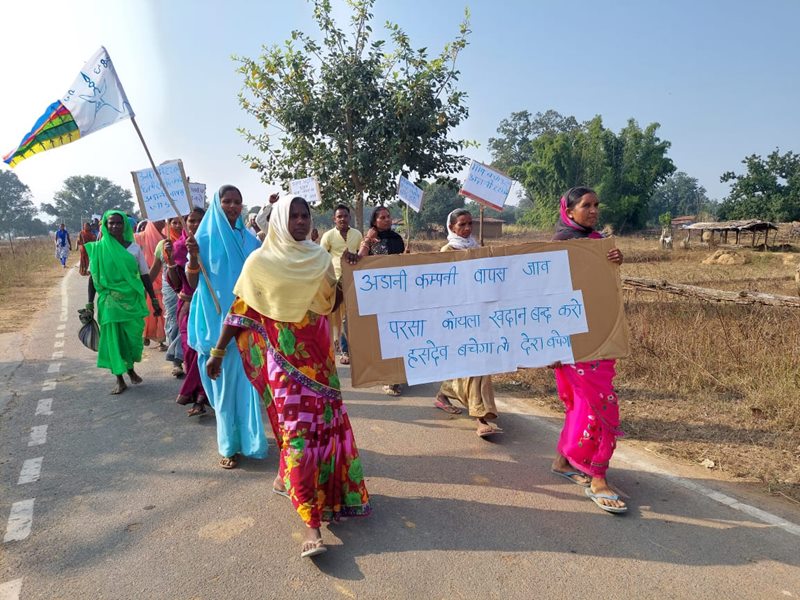
On October 13, tribal villagers undertook 300 kms foot march to save their forests. Photo: @SHasdeo/Twitter
At least 25 conservationists have written to Chhattisgarh Chief Minister Bhupesh Baghel urging the state government to overturn its decision of opening up and expanding coal mining operations in environmentally sensitive Hasdeo Aranya forests in the state.
“We believe this to be an ill-considered decision, one that will have devastating long-term consequences for the natural heritage of Chhattisgarh and the lives and livelihoods of millions,” stated the signatories in the letter dated December 13. Beneath the foliage of the Hasdeo Aranya forest lies one of the biggest reserves of coal in India. As per the estimates of the Indian Bureau of Mines, the reserves of coal in the Hasdeo Aranya forest amount to 5179.35 million tonnes of coal. The Hasdeo coalfield is spread over an area of 187,960 hectares and is at the centre of a face-off between the government and the local tribal communities.
On the same day, on December 13 when conservationists wrote to the chief minister, the Chhattisgarh High Court issued a stay order on land acquisition for Parsa Coal Block in Hasdeo Aranya region while hearing a petition filed by five residents of Hariharpur, Salhi, and Fatehpur villages facing displacement.
In its order, a copy of which is with Gaon Connection, the High Court has noted that 1,250 hectares of land of Parsa block in Surguja district of the state has been acquired. Of this nearly one-third is cultivable land of tribal communities. The court order highlighted that the land acquired is in favour of a private company.
The court order comes after the central government failed to respond within the deadline. Earlier, on October 27, the court had ordered both the state and central governments to respond within six weeks. The next hearing will be on January 8.
What is the controversy around Hasdeo Aranya?
Hasdeo Aranya is one of the largest contiguous stretches of dense forest in Central India, spanning 170,000 hectares in Surguja, Korba and Surajpur districts. It is a rich tribal belt supporting a large population of Adivasis.
The Chhattisgarh government recommended taking up new proposals for mining in Parsa, Kente Extension and Madanpur South coal blocks and the expansion of mining in the Parsa East and Kente Basan (PEKB) block.
A government order dated October 21 this year, granted formal approval for non-forestry use of about 840 hectares of forest land of Parsa Open Cast Coal Mining Project in Surguja and Surajpur districts in Chhattisgarh.
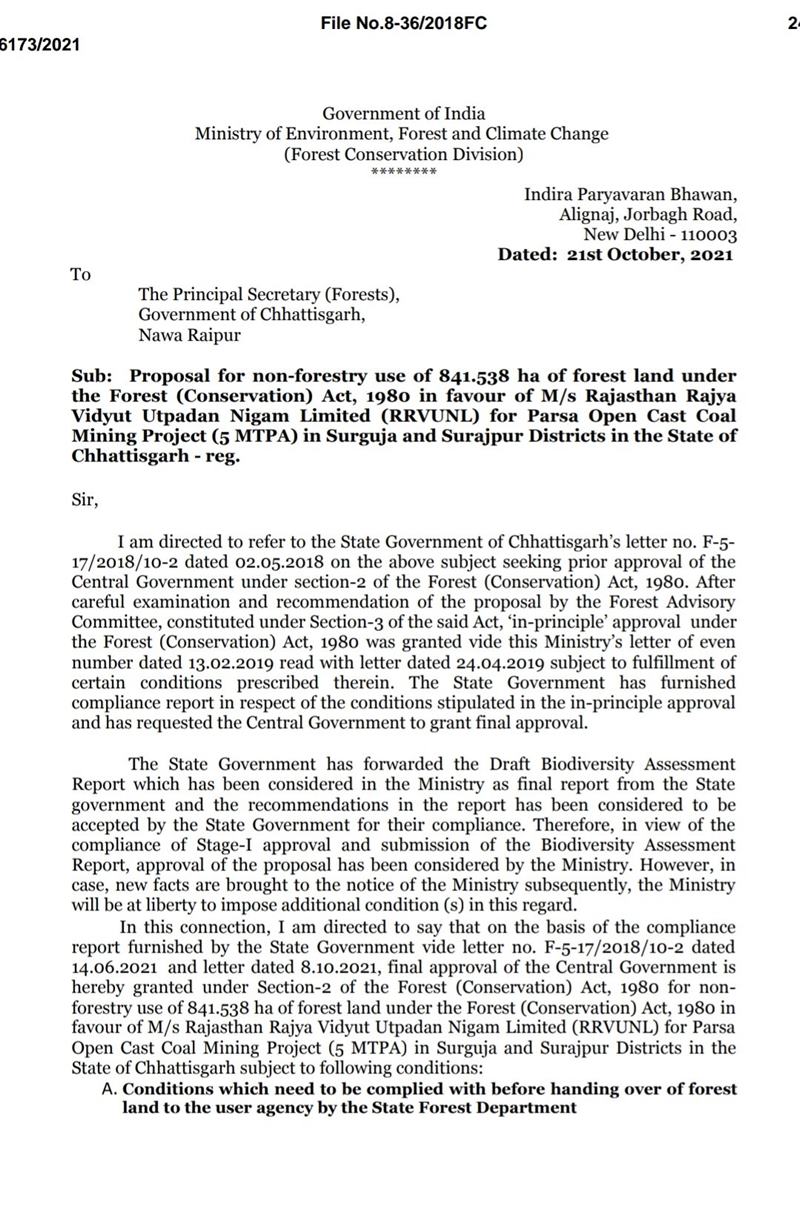
The conservationists, in its letter, have highlighted that the Chhattisgarh government has “chosen to ignore the findings and recommendations of the extensive assessment conducted by WII [Wildlife Institute of India], India’s foremost wildlife research organisation.”
The WII report titled Biodiversity assessment with emphasis on select faunal groups in the Hasdeo Arand CoalField, Chhattisgarh, which was recently released, highlighted that the Hasdeo Aranya forest, in which Hasdeo Arand Coal Fields lies, is one of the largest contiguous stretches of dense forest in Central India, spanning 170,000 hectares. The Hasdeo Aranya coal fields (HACF) comprise Tara, Parsa, Parsa East and Kente Basan, and Kente Extension.
Threat to biodiversity
The Hasdeo Aranya region hosts rich biodiversity. The recent WII report records at least 82 species of birds and several endangered species of butterflies and reptiles. The region also has rich flora of over 167 plant species, including 18 that are ‘threatened’.
“This Chhattisgarh area is a very rich forest. It is a very good biodiversity and a habitat of tigers and elephants. The study by Wildlife Institute of India is telling a big no to mining in that area but after that also, the state government ignored that report and gave mining clearances,” Meetu Gupta, Member, State Wildlife Board, Chhattisgarh told Gaon Connection.
“They are ignoring wildlife protection. They are against tribal rights, conservation, wildlife and calling it development for the sake of interest of a private company. This is not development. We want the state government to take their order back,” said Gupta, who is also one of the signatories.
Human-wildlife conflict to increase
The forest is also a major habitat cum migratory corridor for elephants and tigers. The WII report warned that human-elephant conflict is expected to increase in Hasdeo Aranya Coal Fields and the surrounding landscape.
Chhattisgarh, which has less than one per cent of the country’s elephant population, sees extremely high levels of conflict, with over 15 per cent of reported human deaths and severe damage to crops and property.
“WII report highlighted human animal conflict is expected to increase in the state if the new coal block is opened. Despite the WII report, how can recommendations be given for mining? The Centre and the Indian Council of Forestry Research (ICFRE) have together paved a way to destroy Hasdeo,” Alok Shukla, convenor of Chattisgarh Bachao Andolan told Gaon Connection.
“More than forty five elephants have died in the past three years in the state in human-elephant conflict. These conflicts have claimed lives of at least two hundred people,” he added.
Also Read: Mining in Chhattisgarh forcing elephants to look for a home in Madhya Pradesh
The WII report pointed out that the coal mines along with the associated infrastructure development would result in loss and fragmentation of habitat. “The threat to elephants’ intact habitats in this landscape could potentially deflect human-elephant conflict into other newer areas in the state, where conflict mitigation would be impossible for the state to manage,” highlighted the December 13 letter of the conservationists.
‘At least 800 tribal people to get homeless’
Residents, mostly tribal communities, in the Hasdeo Aranya forest, are heavily dependent on the forest for their livelihood, food, water and medicinal needs. The WII report noted that families get a minimum of 60 to 70 per cent of their annual income from forest based resources. The tribal communities perceive ‘mining as a direct threat to their livelihood.’
“At least eight hundred tribal people living in two villages Hariharpur and Fatehpur are expected to face complete displacement as a result of mining operations in Parsa,” said Shukla.
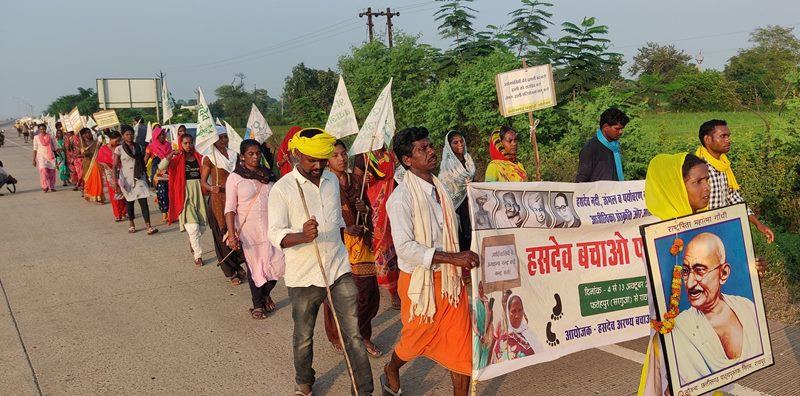
‘Fake village councils to grant consent’
The total mining area of Parsa is more than 1,200 hectares. Of this, about 800 hectares is forest land, the rest is revenue land. In forest land, consent is sought from gram sabhas under The Scheduled Tribes and Other Traditional Forest Dwellers (Recognition of Forest Rights) Act, 2006, commonly known as the Forest Rights Act, 2006.
Meanwhile, in revenue land, which is acquired, a consultation from gram sabhas is sought under the Provisions of the Panchayats (Extension to the Scheduled Areas) Act, 1996, commonly known as PESA, informed Shukla.
Also Read: Can coal mining and the Lemru elephant reserve in Chhattisgarh co-exist?
“No consent or consultation was taken. Instead fake sabhas were conducted,” asserted the activist.
Chhattisgarh Bachao Andolan has stated in its statement that ‘fake’ village councils were allegedly conducted in 2017-2018 in Hariharpur village, Salhi village and Fatehpur village to grant consent to the mining project in the forest areas.
300 kms ‘Padyatra’ to save their lands
Two months back, on October 13, as many as 350 tribal people from the districts of Sarguja and Korba undertook a padyatra (foot march) of 300 kms for 10 days to reach the state’s capital, Raipur, in order to protest against the ‘illegal’ acquisition of coal mines in the Hasdeo Aranya forest area, that had been initiated under the Coal Bearing Areas Act, 1957 without gram sabha consent.
The next day, on October 14, the protestors were allowed to meet the Governor and the state chief minister Bhupesh Baghel who assured them that their grievances would be addressed.
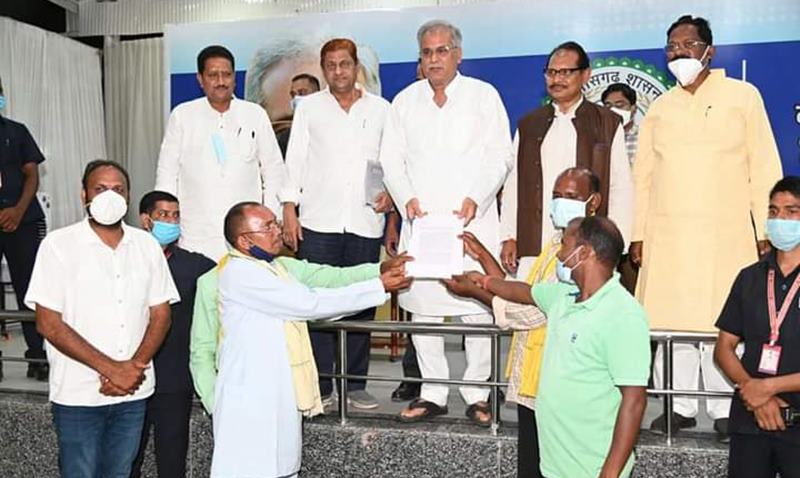
Also Read: Explained: Why are hundreds of tribal villagers marching 300-km to meet the Chhattisgarh Governor
A week later, on October 21, the Union Ministry of Environment, Forest and Climate Change granted formal approval for coal mining in the Parsa block of the Hasdeo-Aranya forest area, despite the assurances to the local tribal people by the state government.
“The tribal villagers walked 600 kilometres to and from Raipur. They reached their homes after being assured of a probe by the Governor in the consent for mining by the gram sabha. But now, the forest clearance has been granted for mining. Is it a joke?” said Shukla.
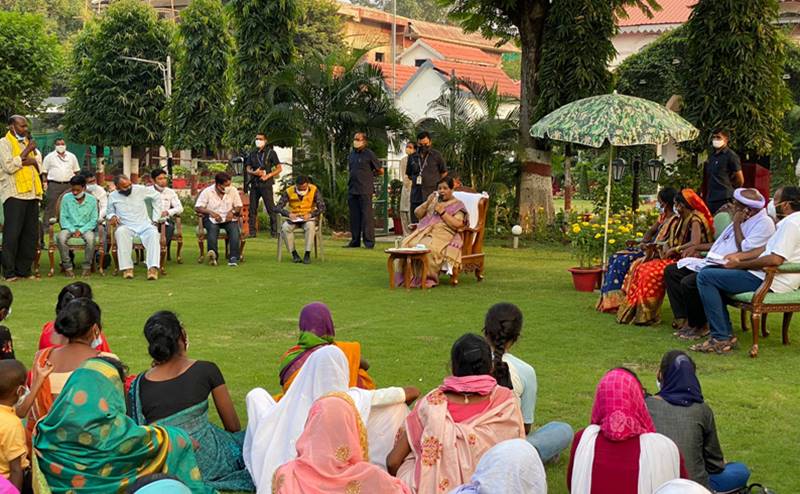
“These tribal people are protesting against two issues. First is expansion of the Parsa East Ketan coal block. The second stage was to start in 2028 but it is being started in 2021 now. The second issue is Parsa’s new coal block. For which, land acquisition has been approved without consent of gram sabha. We had demanded an investigation of fake sabhas,” he added.
Betrayed by Congress-leader Rahul Gandhi?
The conservationists, in their detailed letter, also highlighted that on 15 June, 2015, Member of Parliament and Indian National Congress leader Rahul Gandhi pledged that he would not support development at the cost of tribal communities and forests.
“The recent decision by your government would seem to be a betrayal of that promise,” pointed out the conservationists in their recent letter to the chief minister of the Congress-ruled state. A copy of the letter has also been sent to Rahul Gandhi.
Also Read: Coal Allocation: The full story
“You would excuse us for wondering whether your government’s decision to open up the rich and biodiverse Hasdeo Aranya forest for further mining has less to do with the exigencies of ‘development’ than it does to the convenient exploitation of forest resources and indigenous communities in the name of ‘development’,” stated the letter.
Meanwhile, the next high court hearing on Parsa Coal Block in Hasdeo Aranya region is scheduled for January 8, 2022.

